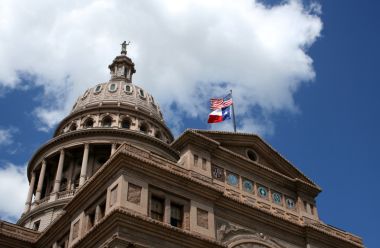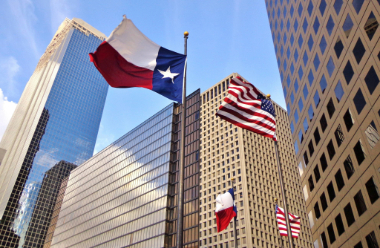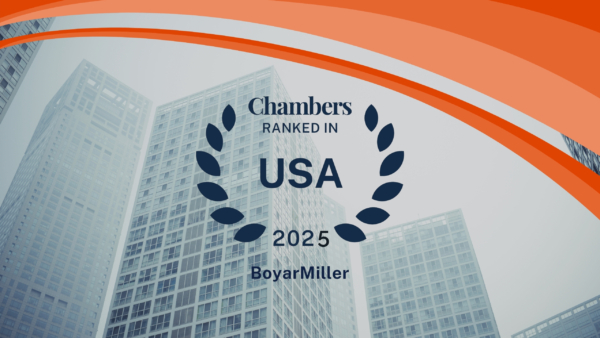With a deep understanding of your business alongside clear and honest communication, we help clients face challenges fearlessly.
Contact us today to learn more about our services and how we can help drive solutions.
Loans Galore! Here’s What Passed the Senate and the House
March 27, 2020
Now including updated information following enactment of the CARES Act and issuance of the Interim Final Rule.
The bill titled the Coronavirus Aid, Relief, and Economic Security Act, or the CARES Act, passed the Senate and the House of Representatives by a unanimous votes, and was finally signed into law by the President on March 27, 2020. The CARES Act will inject approximately $2.2 trillion into various sectors of the American economy, with some $377 billion allocated to loan programs for small businesses across the country. While further details regarding the CARES Act and the relief it offers for small businesses will emerge in the next few weeks, here’s what we know so far:
Who may be eligible
The same businesses that were otherwise eligible for loans backed by the U.S. Small Business Administration (the “SBA”) are still eligible under the CARES Act, except that the CARES Act expands the number of businesses that will be eligible for loans. Specifically, it stipulates that businesses with 500 or fewer employees are eligible, as well as opening up eligibility to businesses that meet the SBA’s small business size standards meaning that certain businesses with over 500 employees may also be eligible. Additionally, certain businesses in the food and hospitality industry (Sector 72 in the aforementioned standards) with more than one location and less than 500 employees at each location may also be eligible. It is important to note that the CARES Act states the lenders shall consider whether a business has been operating since February 15, 2020, in determining a borrower’s eligibility, and further the CARES Act requires borrowers to certify in good faith that “the uncertainty of current economic conditions makes necessary the loan request to support the ongoing operations of the eligible recipient.” Also, loans under the CARES Act are only available for the time period from February 15, 2020 to June 30, 2020.
What are they eligible for?
Eligible businesses will be able to apply for loans not to exceed $10 million per business with the proceeds of such loans to be used for (i) payroll costs, (ii) costs associated with the continuation of health care benefits, (iii) employee salaries and commissions, (iv) payment of interest on mortgage payments, (v) rent payments, (vi) utilities, and (vii) interest on any other debt obligations incurred before February 15, 2020.
What are the terms of the loan?
From what we can ascertain thus far, the loans are generally subject to the same terms as the SBA’s 7(a) loans, except that, as noted above, the maximum loan amount has been increased to $10 million, and the SBA guarantee has been increased to 100% of the loan. Further, there will be no prepayment penalties, no personal guarantees or collateral shall be required, and all interest rates will be under four percent (4%).
What, if any, portion of a covered loan may be forgiven?
Small businesses that receive loans covered by the CARES Act are eligible for forgiveness of indebtedness equal to the amounts incurred and payments made for payroll costs, interest on mortgage payments, rent, and utilities for the 8-week period beginning on the date the applicable loan is given; provided, however, that the amount of the forgiveness will not exceed the principal amount of the loan. Additionally, these forgiven amounts will not be included in gross income for federal income tax purposes.
UPDATES AND CLARIFICATIONS based on the text of the CARES Act and the Interim Final Rule issued by the SBA:
Who may be eligible?
- To be eligible the 500 or fewer employees must have principal places of residence in the United States.
- Borrower must have been in business on February 15, 2020, and either had employees for whom borrower paid salaries and payroll taxes or paid independent contractors, as reported on a Form 1099-MISC.
- The Interim Final Rule confirms that independent contractors, sole proprietors and eligible self-employed individuals are eligible for Paycheck Protection Program (“PPP”) loans.
- The Interim Final Rule also lists certain ineligible entities, such as entities engaged in illegal activity, household employers, entities with owners that are incarcerated or on parole, entities that have defaulted on a SBA loan in the last 7 years, and multiple categories of passive businesses listed in 13 CFR 120.110, including most notably developers and landlords that do not actively use or occupy the assets acquired or improved with loan proceeds and businesses engaged in subdividing real property into lots and developing it for resale. See our article HERE for a more extensive list of ineligible entities.
- The Interim Final Rule confirms that no eligible borrower may receive more than one PPP loan, and the issuance of PPP loans are on a “first come, first served” basis. Per the SBA website, applications being accepted on April 3, 2020, for small businesses and sole proprietorships and on April 10, 2020, for independent contractors and self-employed individuals. The last day to apply for and receive a loan is June 30, 2020; however, many are anticipating funds will run out, so applying early is key.
What are they eligible for?
- The Interim Final Rule states that 75% of the proceeds from PPP loans must be used on payroll costs. More details on the definition of “payroll costs” and how much an eligible borrower can borrow can be found HERE.
What are the terms of the loan?
- PPP loans will mature in 2 years and the interest rate is set at one percent (1%).
- All payments of principal and interest will be deferred for the first six (6) months of the loan; however, interest will still accrue during the loan deferment period.
What, if any, portion of a covered loan may be forgiven?
- The Interim Final Rule announces that up to the full principal amount of a PPP loan and accrued interest may be forgiven.
- Not more than 25% of the loan forgiveness amount may be attributable to non-payroll costs.
- Further guidance is expected.
How do I apply?
- Potential borrowers need to submit to an approved 7(a) lender or other participating lending institution:
- SBA Form 2483; and
- Documentation of payroll costs, which can be provided via:
- Payroll processor records;
- Payroll tax filings;
- Form 1099-MISC records; or
- For a sole proprietorship, records of income and expenses.
- If the borrower is unable to provide such documentation, then the borrower must provide other documentation to prove the qualifying payroll amount being requested.
Find us on boyarmiller.com daily to see our upcoming discussion on more economic stimulus information for the middle market.



